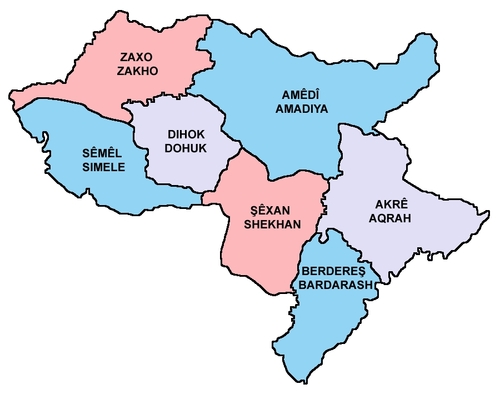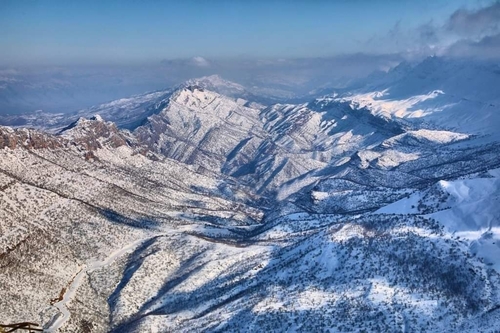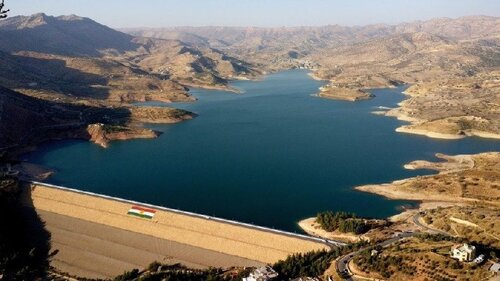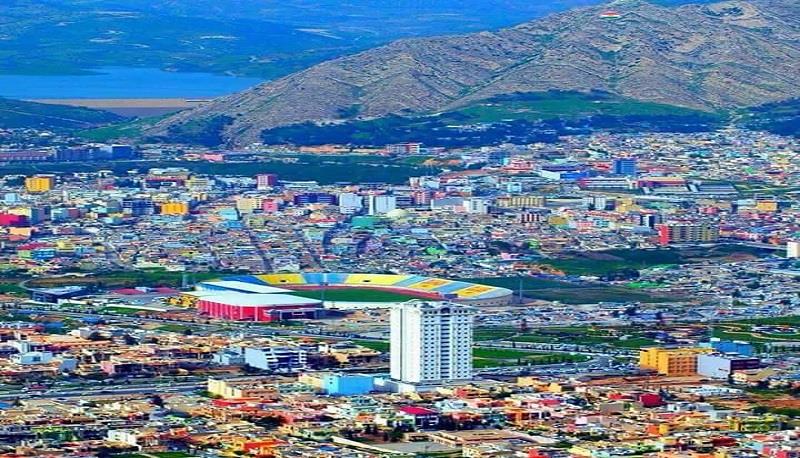Where does the name Duhok come from?
There are different opinions about the name of Duhok, but the most famous is that "Duhok" means "two mountains, or two eggs", the Assyrian name of the city is "Nuhadra".
Duhok is surrounded by mountains on three sides: Spi Mountain in the north, Zawa Mountain in the south, and Mam Sen Mountain in the east.
The city's western side also opens up to the agricultural plain of Semel. There are many monuments in this area, one of the most important of which is the Four Pillars Cave, located on a mountain in the Duhok Dam.
Several tribes live in this area, the most important of which are "Mzuri, Zebari, Barwari, and Kugar" and many other tribes that are old tribes and preserve their customs and traditions inherited from their ancestors. The population of the area follows three religions: Islam, Christianity, and Yazidis.
The towns of Duhok province consist of Duhok, Zakho, Semel, Akre, Shekhan, Bardarash, and Amedi, all of which include several villages, and the total population of Duhok province reaches 1,423,114 people.
This city has always been one of the trading areas of Assyria, and later the Kurds gradually settled there. Now the people of Duhok are all Kurds and speak the northern Kurmanji dialect.

The history of Duhok goes back several thousand years
The city was inhabited by "Kurds, Yazidis, Chaldeans, Assyrians, and Armenians in BC. In 1991, the entire population of Duhok fled the city as a result of airstrikes.
The people of Duhok are also known to be national and proud of their nation and there are many revolutionaries and heroes.
Interestingly, Duhok was a trade route between Iraq, Iran, and Syria and a gateway to the southern part of Kurdistan, as evidenced by historical records.

Tourist attractions of Duhok
Dalal Bridge is located in Zakho, Duhok province, and is one of the oldest historical bridges, Gara Mountain, which is the most famous mountain in Duhok and is 2151 meters above sea level.
Zawa Mountain and Gali Duhok are two tourist attractions near this city, located between altitudes 43.20 and 44.10 east and latitudes 36.40 and 37.20 north.
The city has dozens of hotels, restaurants, and motels, as well as an archaeological museum, a cultural museum, and a museum of Yazidi culture. There is also a playground, a modern market, a small zoo, and several cultural centers, and the University of Duhok and the American University of Duhok are two major scientific centers in the city. There are many tourist attractions and historical and excavated monuments around the province.

In terms of climate
Duhok has a four-season climate, like other surrounding cities, with hot Mediterranean summers. Hot, rainless summers, cold, rainy winters.
Rainfall is high in the cooler months, with the heaviest rainfall in late winter and early spring.
Snow lasts for two or three days in the city, and longer in the highlands and mountains. The region has heavy rainfall in late autumn.










